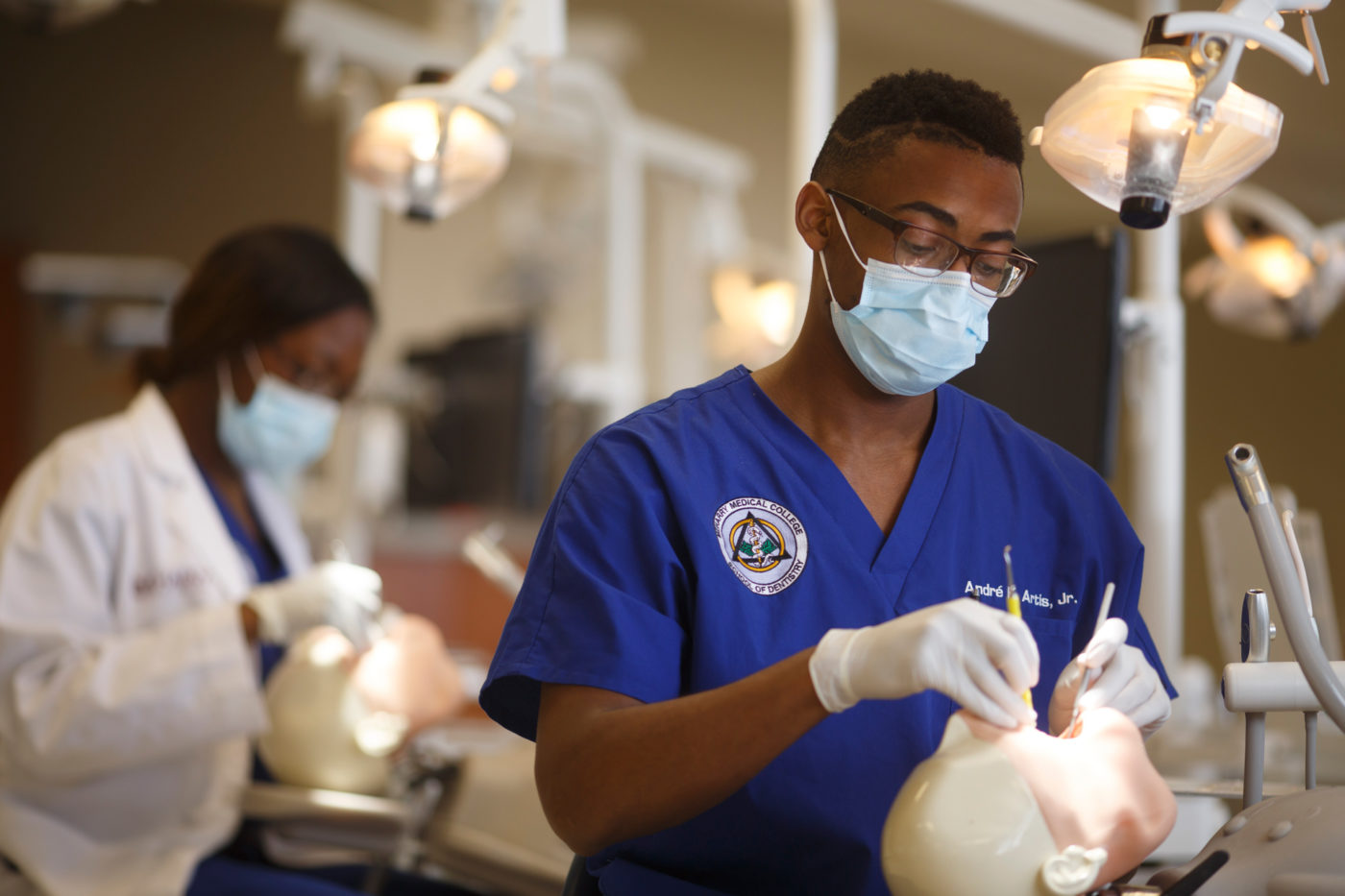Interested in the treatments that lead to a straighter, whiter, and brighter smile? You’re not alone. Around 1 in 5 Americans now opt for cosmetic dentistry – which refers to the set of procedures aimed at improving the appearance of teeth and gums – making it a rapidly growing dental specialty.
As a dentist (studying or qualified), it’s important to keep up with the latest innovations transforming the industry. Not only will this help you secure a role within a forward-thinking company but it’ll also improve the services you offer your patients.
To help you get started, we’ve looked at the 5 top innovations in cosmetic dentistry that are improving patient satisfaction.
1. Digital Smile Design
Digital Smile Design (DSD) is a software tool that allows cosmetic dentists to create and plan aesthetic dental procedures for their patients.
After inputting images of the existing teeth, the system detects other facial features (such as the eyes, nose, and jaw) that will guide the design for a smile that perfectly suits the patient’s face. It’ll also take into account dental structure and the patient’s personal preferences.
The software then automatically creates a new smile. The dentist can adjust this according to patient feedback, giving both the dentist and the patient a clear idea of the outcome of their cosmetic treatments. This makes communication a whole lot simpler, ensuring both the dentist and the patients are on the same page before treatments begin.
DSD also allows patients to customize their look, using mock-ups to easily visualize the final result. With such effective collaboration, it’s much likelier the patient will be happy after their dental transformation, greatly improving their satisfaction.
2. Invisalign Braces
When it comes to innovations in dentistry, Invisalign is possibly the biggest breakthrough in recent years.
Whites Dental describes the procedure as ‘A series of clear plastic trays’ with each tray ‘moving your teeth ever so slightly towards its desired final position’. Throughout the treatment, the dentist may make tiny tweaks to ensure the teeth are moving exactly as they should be.
Essentially, Invisalign works in the same way as braces, but rather than tightening the wires, each plastic tray you use in the sequence is closer to your end goal. It can help with:
- Overbites
- Open bites
- Underbites
- Crossbites
- Gaps
- Crooked teeth
But why is this so revolutionary in terms of patient satisfaction? Simply put, it’s far more convenient and discreet. The plastic trays aren’t as visible as metal braces and can be taken off for eating, brushing your teeth, and special occasions.
You also don’t need to frequently visit your orthodontist, making it the clear option for busy individuals. Once the trays have been constructed, patients can let them get to work while they get on with their lives, and switch them out themselves for easy, efficient progress.
This also puts the patient in charge of their progress. They’re empowered to control their own treatment – with a few trips to the dentist to make sure everything’s in check – giving them greater confidence and satisfaction throughout.
3. 3D Printing
3D printing has been incredibly useful for the cosmetic dentistry industry. Rather than taking molds of teeth, sending them off to laboratories, and waiting for the dental product to be made and shipped, dentists can create what they need, when they need it.
3D printing can create crowns, bridges, and Invisalign aligners in a single day. A dental crown can take as little as 20 minutes on a speedy printer, and it can be done on-site at the dentist. This enables a patient to be assessed and treated in a single appointment.
When considering patient satisfaction, this drastically increases the speed at which they can have dental procedures. Rather than getting frustrated at a single crown taking a fortnight to be ready, they can be in and out of the chair within a couple of hours for efficient, hassle-free treatment.
It also gives dentists more autonomy. Rather than dictating their appointments and procedures based on the turnaround times of labs, they can produce what they need in their own time and plan their schedule accordingly. In turn, patients are better informed as to when they can expect treatments for a more transparent service.
4. Nano Dentistry
Nano dentistry is one of the most exciting emerging innovations that’s set to revolutionize a wide range of cosmetic dentistry treatments.
Nano teeth whitening, for example, uses tiny nanoparticles to penetrate deeper into the enamel and break down stains more thoroughly. It can tackle super tough stains without damaging the structure of the tooth, and create a more uniform whitening effect. Patients are left with brighter teeth, reduced sensitivity, and a more effective treatment.
Nanotech can also be used when creating crowns and dentures. Nano-zirconia ceramic is a revolutionary material that’s much tougher and stronger than the ceramics currently common in cosmetic dentistry. It also provides better translucency, helping it blend into the patient’s teeth for a far more discreet end result.
Nanocomposite is another material that’s making waves in cosmetic dentistry. It’s set to become the alternative to acrylic teeth, with a much higher resistance to abrasion and a more natural appearance.
Across its many applications, the consistent outcome of nano dentistry is patient satisfaction. The results of treatments utilizing nanotech are longer lasting, more discreet, and more effective, all of which will lead to happier patients.
5. Laser Technology
Though laser technology has been around for a few decades now, it’s only in the last couple of years that its use has become more widespread in cosmetic dentistry. Now, it’s a staple subject of dental schools and offered at practices throughout America.
The main cosmetic applications of laser treatments include:
- Gum contouring reshaping
- Teeth whitening
- Removal of excess gum tissue
- Gum lightening
Teeth whitening, for example, can be made more effective by using lasers. The procedure is fairly simple, too, with a bleaching gel applied to the teeth and a laser that’s used to activate the gel and remove stains. It’s a super quick whitening technique that leads to whiter teeth in just one session.
For applications like gum reshaping or removal, the precision of the laser leads to less damage around the treatment site, too, helping reduce the discomfort of patients. Laser dental treatments have been shown to reduce pain and inflammation leading to quicker recovery times and better healing.
There’s less need for anesthesia and stitches, fewer risks of infection, and better accuracy. All of this can minimize anxiety for the patient, making the treatment less invasive and painful for greater overall satisfaction.
Final Thoughts
Cosmetic dentistry innovations are giving this dental sector a big boost. By making it easier, quicker, and more convenient, more Americans are expected to invest in white, straight teeth and a brilliant smile. Make sure you’re ahead of the industry by staying up to date with the innovations we’ve discussed in this article.
For more advice on pursuing a career in the medical industry, be sure to check out the latest articles on our blog.



